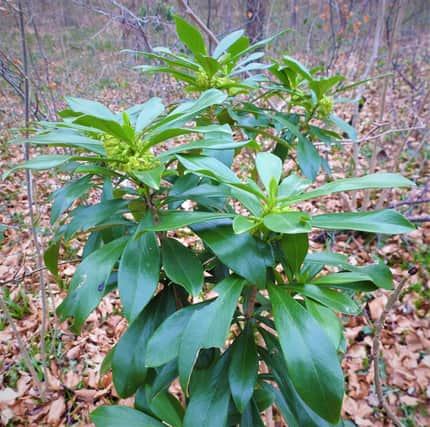Spurge-laurel is a very special plant


Sadly its irreplaceable historic landscape is year-by-year being physically eroded by desperately bad economically-driven forestry management on behalf of the Forestry Commission, but that is a story for a different day. For now I want to focus on the delightful wildflowers of this limestone wood.The site is sandwiched between the sandstones of Sherwood and Clumber with their strongly acidic soils, and the Coal Measures of North
Derbyshire and South Yorkshire.
But here we are on Magnesian Limestone with a thin belt of this alkaline rock running from the north-east of England through into the midlands, and the soils make woods like this very special indeed.
Advertisement
Hide AdAdvertisement
Hide AdOn a recent walk I came across one of the special plants of Whitwell, the ‘spurge-laurel’ or Daphne laureola; and this site is one of its few locations in Derbyshire. Indeed, in the county it is a ‘red data book’ species i.e. very rare and vulnerable.The even rarer cousin of spurge-laurel is the ‘wild Daphne’ or mezereon with its pretty purple flowers and which is sometimes grown as a garden shrub.
At a distance the spurge-laurel looks rather like a rhododendron but of course that is very much an acid-loving species and so would be unusual on a limestone site. Closer examination showed the bundles of tiny yellow flowers.
The bark in particular was formerly used in herbal medicine and was provided in thin, long strips rolled rather like a tape. The material when fresh smelled unpleasant and rather acrid.
Stem bark might also be used when roots were in short supply.
Advertisement
Hide AdAdvertisement
Hide AdA pplied to the skin, unsurprisingly it caused redness and blisters within about a day or two days, and as such was used to cause discharge from what were described as ‘indolent ulcers’. My advice is ‘don’t try this at home’! The bark was also used to treat snake bites and, in Siberia, to heal horses’ hooves.